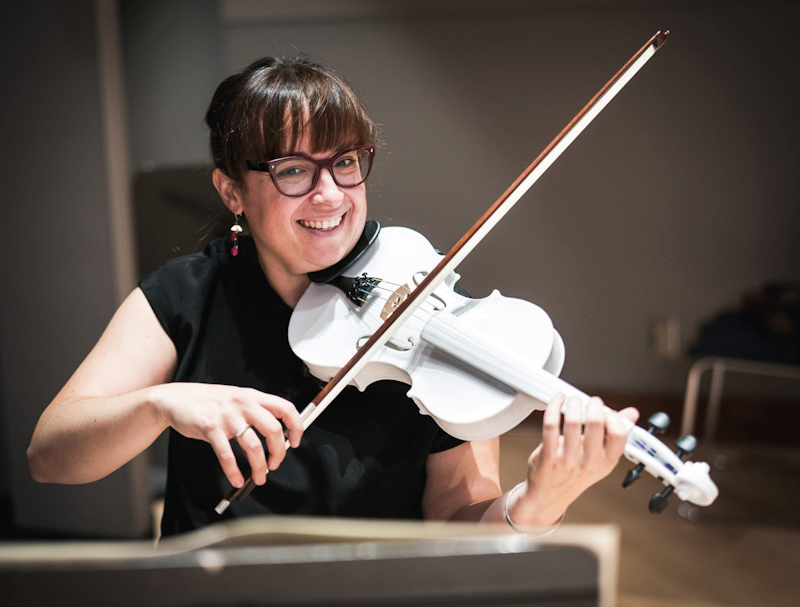Playing to a new tune
Low-cost, durable violins are feasible using 3D printing, say researchers in Canada who hope to increase educational access to instruments.

Students in the web-based AVIVA Young Artists Program have performed the concerto ‘Singularity’, which was specifically composed for the sounds produced by the 3D-printed instruments by Harry Stafylakis, the Winnipeg Symphony Orchestra’s Composer-In Residence.
The 3D String Theory project was a collaboration between the composer, Ottawa Symphony Orchestra, the Industrial Technology Centre in Winnipeg, violin maker Charline Dequincey, and 3D-design company Creadditive.
Dr Mary-Elizabeth Brown, Director of the AVIVA Program, says that the team found that the choice of materials, the curvature of the body and the printing pattern all influence the instrument’s quality.
The 3D-printed violin was created in two sections with a clip-in design, and the body is 3mm-thick polylactic acid (PLA). They discovered that the sound was better when there was a honeycomb or square set of cavities to produce a resonant tone. It was printed on a fused deposition modelling printer.
The neck and fingerboard are 3D printed in one section of smooth acrylonitrile butadiene styrene (ABS) plastic, which is designed to be comfortable to hold. Brown says, 'Prior testing revealed that ABS was not a preferable material for the body of the instrument because of its resonating properties (or lack thereof), but its smooth texture made it a good candidate for the parts of the instrument that touch the player’s hands.'
The team reports that the instrument produces a darker, more mellow sound than traditionally made violins.
The concerto performed by the students using the new instruments was specifically commissioned for these 3D-printed instruments. Brown says it was written 'with their specific tonal colours in mind”. She adds, “That said, they do not differ that much from traditional instruments, and it is absolutely possible to play a standard repertoire on them. Similarly, a traditional instrument could be used to play this new commission.'
She says that the most notable difference is the brightness of sound, 'It is a slightly more sombre tone than my beautiful 18th Century Italian instrument. That said, it doesn’t sound like a viola.'
The team has printed complete violins in all sizes, including fractional ones. They say that the cost of the 3D-printed instrument in PLA is about US$7, which fully assembled is below US$27.
Brown notes that several previous studies have looked at the acoustical diagrams of PLA compared to wood, and that PLA instruments require a different combination of both the weight and speed of the bow.
The work started in 2018 when an interdisciplinary team based in Ottawa, USA, with support from the Ottawa Symphony Orchestra, started to investigate the possibility of printing a violin. They created playable instruments and premiered a concerto for 3D-printed instruments and symphony orchestra. It took 66 hours and an industrial printer, costing around US$1,220.
Then in 2020, a team in Toledo, Ohio, supported by the Toledo Symphony Orchestra, continued the work, using recycled plastic material. It used a multi-part, rod-based design and cost less than US$150. Brown is a Montreal-based member of the original team and continued the work in simplifying the design and scaling the violins for students in education.
The developers next want to explore design modifications and ways to lower production costs to make these instruments more widely available.







